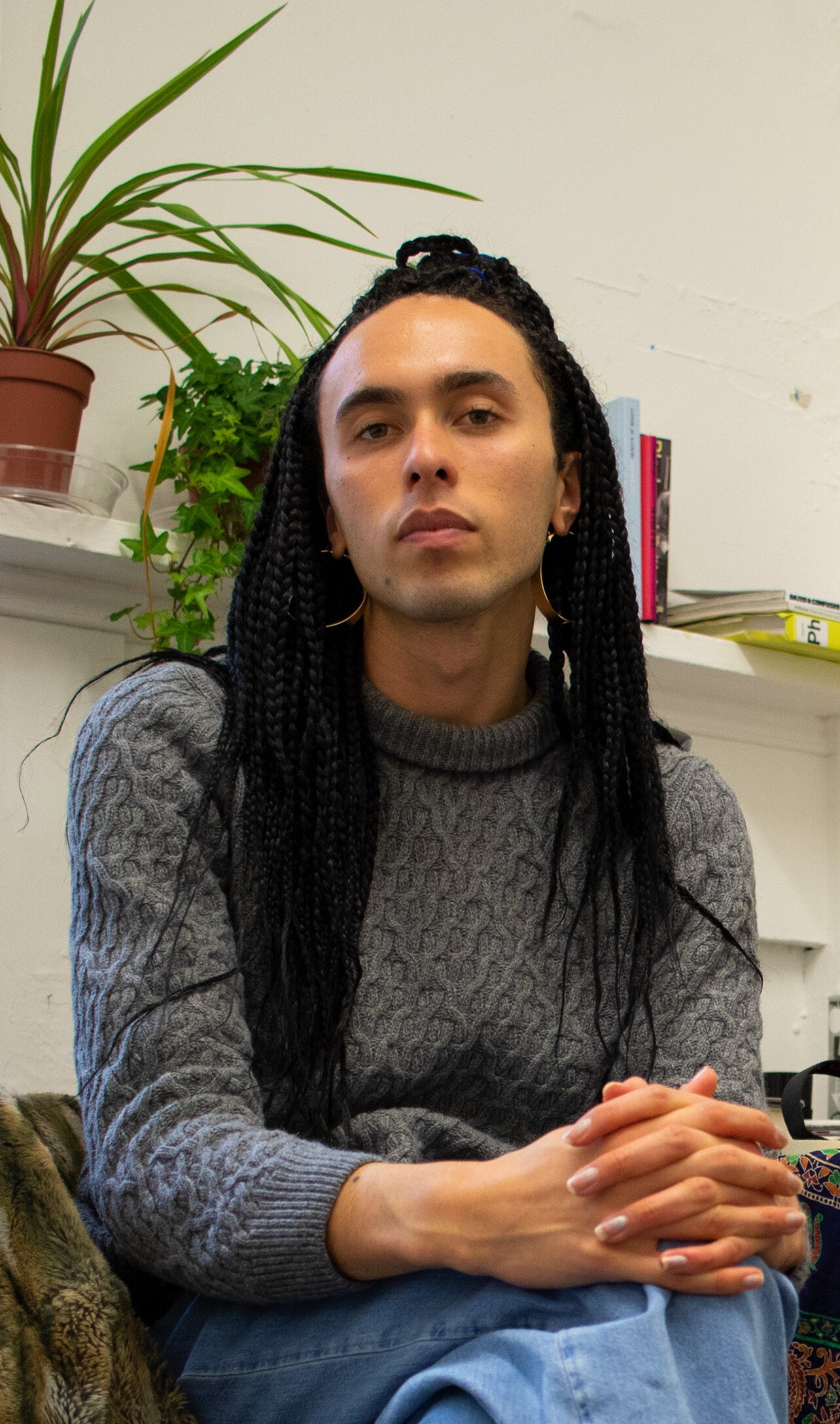Harvey Dimond (b.1997) is a British-Barbadian visual artist, writer and researcher sometimes based in the UK.
Working primarily with video and print, their practice works with queer(ed) pre and post-colonial histories in the Caribbean and Southern Africa to imagine alternative realities for queer people of African descent. Their recent work, a storm, progress, a body of work taking the form of video, research and publications, considers the relationship between meteorological and political conditions in the Caribbean and South Africa.
Q&A with Harvey Dimond
Tell us about yourself
My name is Harvey Diamonds, I'm an artist, a writer, and a researcher currently based between Glasgow and Athens. So I just graduated with a degree in Photography from the Glasgow School of Art and my work is mostly photography video orientated, alongside writing and developing exhibitions, making a curatorial practice while studying. I am also involved in a lot of grassroots work to address institutional racism at the Glasgow School of Art and across institutions in Scotland.
What themes are you exploring with your practice?
My work looks at the connections between current political tensions, current environmental tensions, and how the root of this is colonialism. I am particularly looking at how anti-blackness and racism has manifested, how this connects to transphobia, and how this then connects the current climate crisis. I also look at how we can go about addressing some of these issues and how these issues are intertwined My research looks to Queer and Trans Histories in West and Southern Africa, and also in the Caribbean and that’s kind of working towards dismantling some of these structures and creating space for people of African descent in the Queer community in the UK.
Sedee, screenprint and digital collage, 2020.
From the akan word cedi, cowrie shells where used as currency in West Africa up until 90. Although native to the Indian Ocean, these shells were ought by Arab traders to the West coast in the 14th Century.
What were you doing before and during lockdown?
I was lucky enough to develop some work out in Italy when I was working there last Summer and to undertake new work and research in South Africa back in March just before the lockdown happened. That kind of formed a new body of work which I hope to continue in the next few months.
During lockdown I have been working at home in my flat in Glasgow where I have been working freelance as well. I have been working pretty loosely and pretty flexibly, working with a lot of technology that isn't really great for what i’m working on, particularly with films, it has been quite challenging. The novelty of working from home has worn off now, but it's also been nice to be in a quiet environment and that is allowed to concentrate a lot more and continue to develop research which has been an enjoyable part of the last few months.
What influences do you have in your practice?
One of my biggest inspirations over the last few years has been an artist called Zanele Muholi who is an artist based in South Africa. She calls herself a visual activist which I think is really incredible. She basically has spent a long time documenting Queer and Trans Black communities in South Africa and doing so much work, not only with photography and her own art practice, but just as an activist and really seeking to represent some of the invisible but also hypervisible Queer Black bodies in South Africa.
There are also two Glasgow based artists, Alberta Whittle and Camara Taylor who are creating incredible work, really amazing video works and bodies of research that speaks to a lot of themes I'm really interested in and they've been really inspiring. It's been great to have some proximity to those artists.
What are your plans for the future?
Over the next few years i’m planning on developing my writing and video work, expanding my curatorial practice, and getting more experience. I am hoping to move South Africa in a couple of years time to study and maybe start doing some work out there and creating exhibitions and maybe working on some academic writing.
Sedee II, screenprint and digital collage, 2020.
From the akan word cedi, cowrie shells where used as currency in West Africa up until 90. Although native to the Indian Ocean, these shells were ought by Arab traders to the West coast in the 14th Century.




